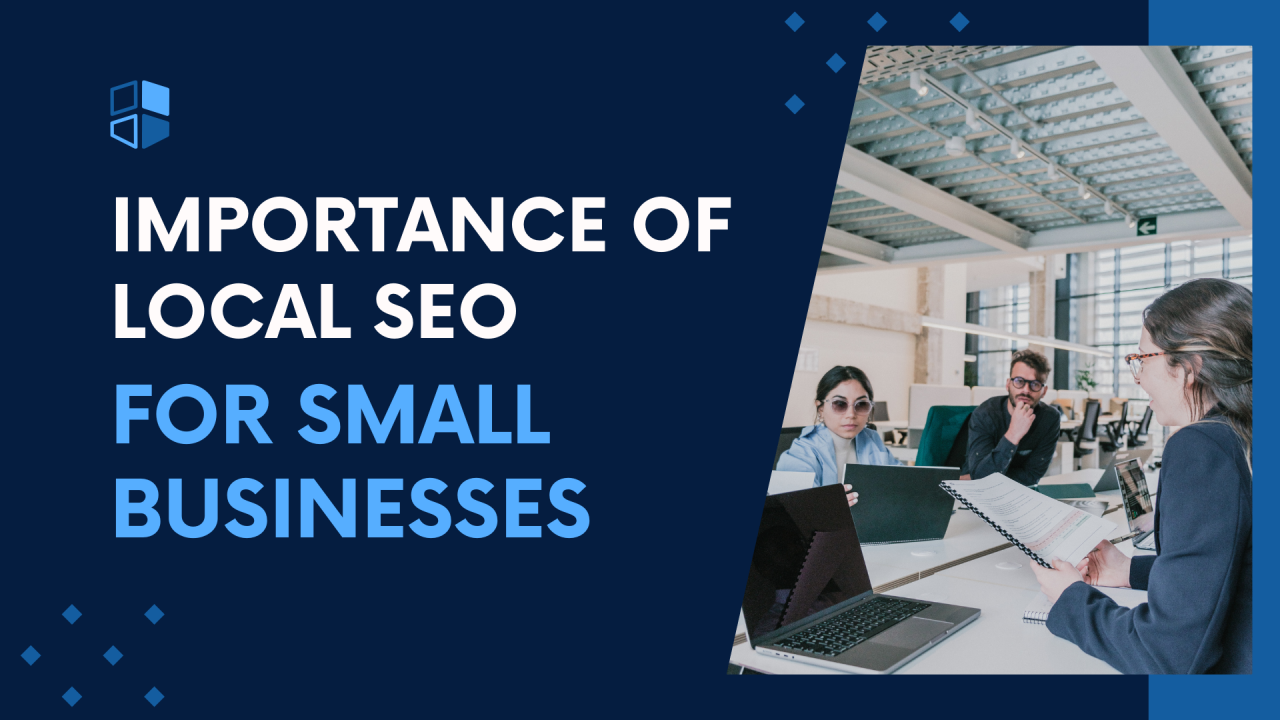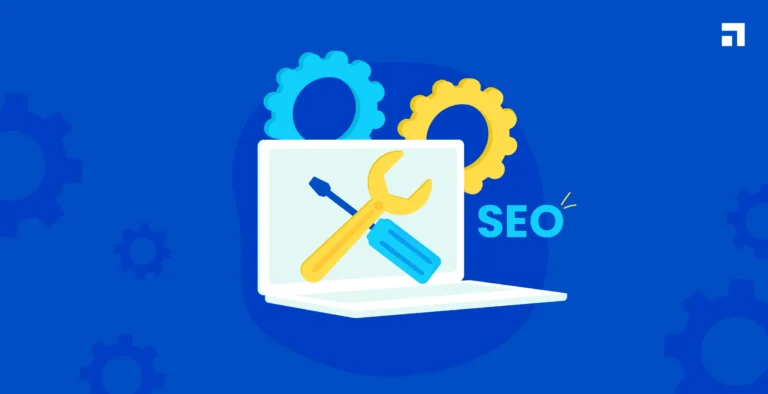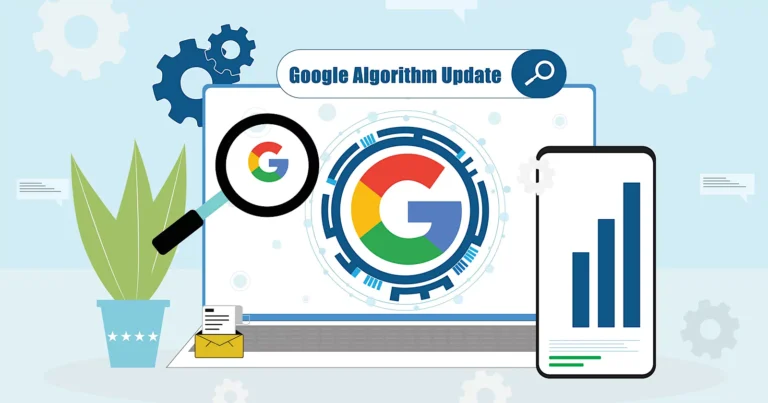Local SEO for Small Businesses – Get Found
In today’s digital age, local SEO for small businesses is essential to stand out and attract nearby customers. By optimizing your online presence for local searches, you can drive more foot traffic and ensure your business thrives. Local SEO levels the playing field against larger competitors, bringing highly targeted and ready-to-convert customers to your doorstep.
For small businesses relying on their local community, local SEO is a game-changer. It amplifies your visibility, helping potential customers find you when they need your services the most. We’ll also explore how Semantic/Holistic SEO, championed by Koray Tuğberk GÜBÜR, can take your local SEO efforts to the next level, creating valuable and relevant content that meets your audience’s needs and fosters strong community connections.

What is Local SEO?
Local SEO (Search Engine Optimization) is the practice of optimizing your online presence to attract more business from relevant local searches. These searches occur on Google and other search engines when users search for businesses and services near their location. Essentially, local SEO ensures that your business appears prominently in search results when potential customers in your vicinity are looking for what you offer.
- Google My Business (GMB) Optimization:
- Claiming and Verifying Your Listing: The first step in local SEO is to claim and verify your Google My Business listing. This free tool by Google allows you to manage how your business information appears across Google Search and Google Maps.
- Completing Your Profile: Ensure your GMB profile is complete with accurate information, including your business name, address, phone number, website, and hours of operation. Add high-quality photos, respond to reviews, and post updates regularly.
- Local Citations and Directory Listings:
- Consistency is Key: Make sure your business information is consistent across all online directories and citations. This includes sites like Yelp, Yellow Pages, and industry-specific directories.
- NAP (Name, Address, Phone Number): Consistent NAP information helps search engines verify your business’s credibility and improves your local search ranking.
- On-Page SEO:
- Localized Content: Create content that targets local keywords and addresses the needs and interests of your local audience. This includes blog posts, service pages, and location-specific landing pages.
- Meta Tags and Descriptions: Optimize your meta titles and descriptions with local keywords to improve your search visibility.
- Reviews and Ratings:
- Encourage Customer Reviews: Positive reviews on Google and other review sites boost your credibility and influence potential customers. Encourage satisfied customers to leave reviews and respond to them promptly.
- Manage Negative Reviews: Address negative reviews professionally and offer solutions to resolve issues. This shows potential customers that you value feedback and are committed to improving your business.
- Local Backlinks:
- Building Local Links: Acquire backlinks from local websites, news outlets, and community blogs. These backlinks signal to search engines that your business is relevant and trusted within the local community.

The Significance of Local SEO
- Increased Visibility:
- Local SEO enhances your visibility in local search results, making it easier for potential customers to find you when they search for services you offer in your area.
- Higher Conversion Rates:
- Local searches often have high intent, meaning users are more likely to convert into customers. When your business appears in local search results, you’re reaching people who are ready to take action.
- Competitive Advantage:
- Small businesses can compete with larger corporations by leveraging local SEO. A well-optimized local SEO strategy helps you stand out in your community and attract more customers.
- Builds Trust and Credibility:
- Positive reviews and a strong local presence build trust and credibility with potential customers. People are more likely to choose businesses that have a good reputation and are easily accessible.
- Cost-Effective Marketing:
- Local SEO is a cost-effective marketing strategy compared to traditional advertising methods. It allows you to reach a targeted audience without a massive budget.
Local SEO vs Small Business SEO: What’s the Difference?
Local SEO:
Local SEO focuses on optimizing a business’s online presence to attract customers from a specific geographic area. It’s particularly crucial for businesses with a physical location or those that serve a specific local area.
Key Components of Local SEO
| Component | Description |
|---|---|
| Google My Business (GMB) Optimization | Creating and maintaining an accurate GMB profile to appear in local search results and Google Maps. |
| Local Citations | Ensuring business information is consistent across local directories and online listings. |
| Localized Content | Creating content that targets local keywords and addresses the interests of the local community. |
| Customer Reviews | Encouraging and managing online reviews to build a positive local reputation. |
| Local Backlinks | Acquiring backlinks from local websites, news outlets, and community organizations. |
Goal: The primary goal of local SEO is to increase visibility within a specific geographic area, making it easier for local customers to find and choose your business.
Example Businesses:
- Restaurants, cafes, retail stores, salons, and service-based businesses like plumbers or electricians.
Small Business SEO:
Small business SEO is a broader strategy aimed at improving the overall online presence of small businesses, regardless of whether they serve a local or national audience. It encompasses a wide range of SEO tactics to enhance search engine rankings and attract more website traffic.
Key Components of Small Business SEO
| Component | Description |
|---|---|
| Website Optimization | Ensuring the website is mobile-friendly, has fast load times, and provides a good user experience. |
| Keyword Research and On-Page SEO | Identifying relevant keywords and optimizing website content, meta tags, headers, and URLs. |
| Content Marketing | Producing high-quality, valuable content that addresses the needs and interests of the target audience. |
| Link Building | Acquiring backlinks from reputable websites to improve domain authority and search rankings. |
| Technical SEO | Fixing technical issues like broken links, duplicate content, and improving site architecture. |
Goal: The main goal of small business SEO is to enhance the overall online visibility of the business, attract more organic traffic, and convert visitors into customers, whether locally or globally.
Example Businesses:
- E-commerce stores, online service providers, small manufacturing companies, and consultancy firms.
Key Differences
- Geographic Focus:
- Local SEO: Targets customers in a specific geographic area.
- Small Business SEO: Can target a wider or even national audience.
- Optimization Tactics:
- Local SEO: Emphasizes local citations, GMB optimization, and local content.
- Small Business SEO: Focuses on broader SEO strategies like content marketing, link building, and technical SEO.
- Customer Intent:
- Local SEO: Targets users with immediate purchasing intent or those looking for local services.
- Small Business SEO: Aims to attract a broader audience, including those in the research phase or with long-term purchasing intent.
- Impact on Business:
- Local SEO: Directly impacts foot traffic and local customer acquisition.
- Small Business SEO: Enhances overall brand visibility and drives online sales or leads.
Both local SEO and small business SEO are essential for different reasons. Local SEO is crucial for businesses that rely on local customers and physical foot traffic, while small business SEO is vital for improving overall online presence and attracting a broader audience. Understanding the differences and implementing the right strategies can help small businesses thrive in their respective markets.
Why is Local SEO for Small Businesses Important?

Local SEO is not just a buzzword; it’s a powerful tool that can significantly impact the success of small businesses. Here’s why local SEO is crucial for boosting visibility and why small businesses should prioritize it.
1. Enhanced Online Visibility
Local Search Results: Local SEO ensures that your business appears in local search results, including the coveted Google 3-Pack, which showcases the top three local businesses related to a user’s search. Being in this spot dramatically increases your chances of being seen by potential customers.
Google My Business (GMB): A well-optimized GMB profile increases your visibility on Google Search and Google Maps. When someone searches for a service you offer, your business appears with all the necessary information, making it easy for customers to find and contact you.
2. Attracting Targeted Traffic
Relevant Audience: Local SEO targets people in your geographic area who are actively looking for your services or products. This means the traffic you get is highly relevant and more likely to convert into actual customers.
High Intent Searches: Local searches often come from users with high purchasing intent. When someone searches for “coffee shop near me” or “plumber in Sacramento,” they are usually ready to make a purchase or book a service. Local SEO captures this intent-driven traffic.
3. Building Trust and Credibility
Customer Reviews: Local SEO encourages and highlights customer reviews, which are crucial for building trust and credibility. Positive reviews and high ratings can persuade potential customers to choose your business over competitors.
Local Reputation: Appearing in local search results consistently helps establish your business as a trusted and reliable option in your community. Over time, this builds a strong local reputation that attracts more customers.
4. Competitive Advantage
Level Playing Field: Local SEO levels the playing field for small businesses. While large corporations may have larger marketing budgets, local SEO allows small businesses to compete effectively by focusing on local relevance and community engagement.
Standing Out: With a well-executed local SEO strategy, you can stand out from competitors who may not be investing in local optimization. This can be a significant advantage in attracting local customers.
5. Increased Foot Traffic and Sales
Drive Physical Visits: For businesses with physical locations, local SEO is instrumental in driving foot traffic. When customers can easily find your address and contact information, they are more likely to visit your store.
Boosting Sales: Increased visibility and higher foot traffic naturally lead to more sales. Local customers who find you through local searches are often ready to make immediate purchases, directly impacting your bottom line.
6. Cost-Effective Marketing
High ROI: Local SEO is a cost-effective marketing strategy with a high return on investment. It targets potential customers who are already interested in your services, reducing the cost of customer acquisition compared to traditional advertising methods.
Long-Term Benefits: Unlike paid ads, the benefits of local SEO are long-lasting. Once your local SEO strategy is in place and optimized, it continues to drive traffic and visibility without ongoing costs.
Local SEO is essential for small businesses looking to increase their visibility, attract more targeted traffic, and build a strong local reputation. By focusing on local optimization, small businesses can compete effectively with larger companies, drive more foot traffic, and ultimately boost their sales. Investing in local SEO is not just a smart move; it’s a necessary one for any small business aiming to thrive in today’s competitive market.
Local SEO for Small Businesses: Where Can You Rank?
When it comes to local SEO, there are two primary areas where small businesses can significantly improve their visibility: Local Organic Search Engine Results Pages (SERP) and the Local Map Pack. Each offers unique opportunities to attract local customers and drive traffic to your business.
Local Organic SERP
What is Local Organic SERP? Local Organic SERP refers to the standard search results that appear when a user performs a local search query, such as “best pizza in Sacramento.” These results are not paid ads but are determined by Google’s search algorithm based on relevance, quality, and other SEO factors.

Key Features:
- Localized Content: Local organic results often feature content that is specifically relevant to the searcher’s location. This includes blog posts, service pages, and other content optimized with local keywords.
- Business Listings: Apart from regular web pages, local organic SERP can also include business listings from directories like Yelp, TripAdvisor, and other local-specific sites.
- Reviews and Ratings: Customer reviews and ratings can appear in the search results, influencing click-through rates and providing social proof to potential customers.
Benefits:
- Increased Visibility: Ranking in local organic SERP increases your business’s visibility to local searchers looking for specific services or products.
- Targeted Traffic: Local organic results attract highly targeted traffic from users who are actively searching for what your business offers.
- Credibility and Trust: Appearing in organic search results enhances your business’s credibility, as users tend to trust organic results more than paid ads.
Local Map Pack
What is the Local Map Pack? The Local Map Pack (also known as the Google 3-Pack) is a prominent feature in local search results that displays the top three local businesses related to a specific query. It appears above the organic search results and includes a map with business locations, contact information, and reviews.

Key Features:
- Business Name and Address: The Local Map Pack prominently displays the business name, address, and phone number.
- Google Reviews: Customer reviews and ratings are highlighted, providing immediate social proof.
- Map and Directions: A map showing the business locations helps users find and visit your business easily.
- Call and Website Buttons: Direct links to call the business or visit the website improve accessibility and user convenience.
Benefits:
- Prime Visibility: The Local Map Pack appears at the top of the search results, often above the organic listings, ensuring maximum visibility.
- High Click-Through Rate: Being featured in the Local Map Pack leads to higher click-through rates due to its prominent placement and the inclusion of key business information.
- Driving Foot Traffic: The map and directions feature makes it easy for customers to find and visit your physical location, increasing foot traffic.
- Trust and Credibility: Featuring prominently in the Local Map Pack boosts your business’s credibility and trustworthiness in the eyes of local customers.
Ranking opportunities in local SEO for small businesses are primarily centered around the Local Organic SERP and the Local Map Pack. Each offers unique benefits that can significantly enhance your visibility, attract targeted traffic, and drive more customers to your business. By optimizing for both local organic results and the Local Map Pack, small businesses can effectively compete with larger companies and establish a strong local presence.
What are the Benefits of Local SEO for Small Businesses?
Local SEO offers several key advantages that can significantly impact the success of small businesses:

1. Increase Brand Awareness in Your Local Community
Local SEO is a powerful tool for increasing your brand’s visibility within your local community. By optimizing your online presence for local search terms, your business appears in local search results, Google Maps, and local directories. This consistent visibility helps to familiarize local residents with your brand, even if they haven’t visited your business yet. Over time, this increased exposure builds brand awareness, making it more likely that locals will think of your business when they need your products or services.
2. Higher Rankings Result in Higher Conversions
Higher rankings in local search results directly correlate with higher conversion rates. When your business appears at the top of search results, it’s seen as more credible and trustworthy. Users are more likely to click on top-ranked listings, and since local searches often have high intent, these clicks often lead to conversions, whether it’s making a purchase, booking a service, or visiting your location. By securing top positions in search results, you attract ready-to-act customers, leading to increased sales and inquiries.
3. Compete Against Local Competitors
Local SEO levels the playing field, allowing small businesses to compete effectively against larger local competitors. By focusing on local keywords, optimizing your Google My Business profile, and actively managing customer reviews, you can enhance your online presence. Additionally, building local citations and acquiring backlinks from community websites can further boost your visibility. These strategies help you stand out in local search results, attracting more customers and gaining an edge over competitors who may not be leveraging local SEO as effectively.
4. Increase Local Brand Recognition & Trust
A strong local SEO strategy enhances brand recognition and trust within your community. Positive customer reviews, accurate business information, and high visibility in local search results all contribute to a trustworthy image. Engaging with local customers through social media and local events also reinforces your brand’s presence. When locals repeatedly see your business in search results and receive positive word-of-mouth recommendations, their trust in your brand grows, leading to long-term loyalty and ongoing business.
In summary, local SEO is a powerful tool that boosts visibility, attracts targeted traffic, and drives growth for small businesses by connecting them with local customers ready to engage.
What are the Local SEO Ranking Factors?
Local SEO rankings are influenced by several key factors that determine how well your business appears in local search results:

- Google My Business (GMB) Optimization: A complete and optimized GMB profile, including accurate business information, categories, photos, and regular updates, is crucial for local search visibility.
- NAP Consistency: Consistent Name, Address, and Phone number (NAP) information across your website, GMB, and online directories helps search engines verify your business’s credibility.
- Local Citations: Listings in local directories and citation sites boost your business’s local relevance and authority.
- Reviews and Ratings: Positive reviews and high ratings on Google and other review platforms enhance your business’s trustworthiness and influence local rankings.
- On-Page SEO: Optimizing your website with local keywords, meta tags, and location-specific content helps improve local search visibility.
- Local Backlinks: Acquiring backlinks from reputable local websites, news outlets, and community organizations signals to search engines that your business is relevant and authoritative in your local area.
- Mobile Optimization: Ensuring your website is mobile-friendly is essential, as many local searches are conducted on mobile devices.
Local Organic SERP: Detailed Discussion on Ranking Factors
1. On-Page Signals
| Component | Description |
|---|---|
| Localized Content | Creating content that targets local keywords and addresses the needs and interests of your local audience. This includes blog posts, service pages, and location-specific landing pages. |
| Meta Tags and Descriptions | Optimizing your meta titles and descriptions with local keywords to improve search visibility and click-through rates. |
| NAP Information | Ensuring your business name, address, and phone number (NAP) are consistently listed on your website. |
| Schema Markup | Implementing local business schema markup to help search engines better understand your business information and display rich snippets in search results. |
2. Local Link Building
| Component | Description |
|---|---|
| Local Directories | Submitting your business to local directories and citation sites, such as Yelp, Yellow Pages, and industry-specific directories, to build credible backlinks. |
| Local Partnerships | Collaborating with local businesses, organizations, and influencers to obtain backlinks from their websites. This could include guest blogging, joint events, or sponsorships. |
| Community Involvement | Participating in local events, charities, and sponsorships can lead to mentions and backlinks from local news outlets and community websites. |
| Content Creation | Creating valuable local content, such as guides, infographics, and blog posts, that other local websites and bloggers will want to link to. |
3. Behavior Signals
| Component | Description |
|---|---|
| Click-Through Rate (CTR) | The percentage of users who click on your link after seeing it in search results. A higher CTR indicates that your listing is relevant and appealing to searchers. |
| Bounce Rate | The percentage of users who leave your website after viewing only one page. A high bounce rate can indicate that your content is not meeting users’ expectations or needs. |
| Dwell Time | The amount of time users spend on your website after clicking through from search results. Longer dwell times suggest that your content is engaging and valuable. |
| Mobile Friendliness | The usability of your website on mobile devices. As many local searches are conducted on mobile, a mobile-friendly site can improve user experience and rankings. |
Local Map Pack: Key Factors Influencing Rankings
1. Google Business Profile: Proximity, Relevance, and Prominence
Your Google Business Profile (formerly Google My Business) is a critical component of local SEO, significantly affecting your rankings in the local map pack. Here’s how it impacts local SEO:

- Proximity: This refers to how close your business is to the location of the searcher. The closer your business is to the user, the higher the chances of appearing in the local map pack.
- Relevance: Google evaluates how well your business matches the search query. Ensuring your profile is complete and includes relevant keywords, accurate business categories, and a detailed description helps improve relevance.
- Prominence: This is based on the information Google has about your business from across the web. Prominence is influenced by factors like online reviews, backlinks, and local citations. A well-optimized profile with consistent updates, high-quality photos, and regular engagement can boost your prominence.
2. Online Reviews (Prominence)
Online reviews play a significant role in local SEO by impacting your business’s prominence and trustworthiness. Here’s how they contribute:

- Quality and Quantity: A higher number of positive reviews can boost your ranking in the local map pack. Encourage satisfied customers to leave reviews on your Google Business Profile.
- Keywords in Reviews: Reviews that mention relevant keywords can help improve your local search rankings. While you can’t control what customers write, you can gently remind them to mention the specific service or product they received.
- Review Responses: Actively responding to reviews, both positive and negative, shows that you value customer feedback and engage with your audience. This can enhance your business’s reputation and influence search rankings.
3. Local Citations
Local citations are online mentions of your business’s name, address, and phone number (NAP) on various websites, including directories, social platforms, and industry-specific sites. They are crucial for local SEO for several reasons:

- NAP Consistency: Ensuring your NAP information is consistent across all citations helps search engines verify your business’s accuracy and legitimacy. Inconsistent information can confuse search engines and hurt your rankings.
- Increased Visibility: Local citations help your business appear in more places across the web, increasing the chances of being found by potential customers.
- Boosting Authority: Citations from high-authority sites can enhance your business’s credibility and authority, positively influencing your local map pack rankings.
Ranking in the local map pack requires a well-optimized Google Business Profile, a strong presence of positive online reviews, and consistent local citations. By focusing on proximity, relevance, and prominence, and actively managing reviews and citations, small businesses can significantly improve their visibility and attract more local customers.
Local SEO for Small Businesses: 8 Strategies to Implement Now
To boost your small business’s local SEO, start by optimizing your Google Business Profile with accurate information and engaging with customer reviews. Create localized content on your website, optimizing meta tags for local searches. Ensure consistent NAP (Name, Address, Phone Number) information across all directories and build local backlinks.

Encourage positive reviews from satisfied customers and actively respond to them. Use social media to engage with your community, promoting local events and offers. These strategies will enhance your visibility in local search results, attract more customers, and drive business growth. Here’s a more detailed explanation for you to better understand it:
1. Make the Website Responsive and Mobile-Friendly
Ensuring your website is responsive and mobile-friendly is critical for local SEO. Many local searches are conducted on mobile devices, so a site that adapts to different screen sizes and provides a seamless user experience will rank higher and keep visitors engaged.
2. Identify Target Location-Based Keywords
Identifying and targeting location-based keywords helps your business appear in local search results. Use tools like Google Keyword Planner to find relevant local keywords and incorporate them naturally into your website content.
3. Optimize Meta Titles and Descriptions for Local Keywords
Optimizing your meta titles and descriptions with local keywords improves your search visibility and click-through rates. Make sure each page has a unique and compelling meta description that includes your target local keywords.
4. Create Pages Targeting Local Keywords
Creating content pages focused on local keywords enhances your relevance for local searches. Develop blog posts, service pages, and landing pages that address the specific needs and interests of your local audience.
5. Create a Google Business Profile and Additional Directory Listings
Setting up a Google Business Profile and ensuring your business is listed in other local directories increases your visibility and credibility. Complete your profiles with accurate information, high-quality photos, and regular updates.
6. Ask for Reviews from Satisfied and Happy Customers
Encouraging satisfied customers to leave reviews boosts your local SEO. Positive reviews enhance your online reputation and influence search rankings, making your business more attractive to potential customers.
7. Ask Local Businesses for a Backlink
Building backlinks from local businesses strengthens your domain authority and local relevance. Partner with local companies for guest blogging, sponsorships, or community events to earn valuable backlinks.
8. Use Social Media to Enhance the SEO Campaign
Leveraging social media for local SEO can drive traffic and engagement. Share local content, promote events, and interact with your community on platforms like Facebook, Instagram, and Twitter to boost your local presence.
Invest in Local SEO for Small Businesses to Capture More Business and Revenue Growth
Investing in local SEO is crucial for small businesses aiming to capture more business and drive revenue growth. By optimizing your online presence for local searches, you increase your visibility to potential customers in your area, leading to higher foot traffic and online engagement. Implementing strategies like mobile-friendly website design, local keyword targeting, optimizing meta elements, and building local backlinks can significantly enhance your search rankings.
Additionally, a well-maintained Google Business Profile and positive customer reviews boost your credibility and attract more local customers. Leveraging social media further amplifies your reach and engagement within the local community. These efforts not only improve your search engine performance but also build a loyal customer base, driving sustained growth and success. In today’s competitive market, prioritizing local SEO is a smart investment that pays off by expanding your customer base and increasing your revenue.






